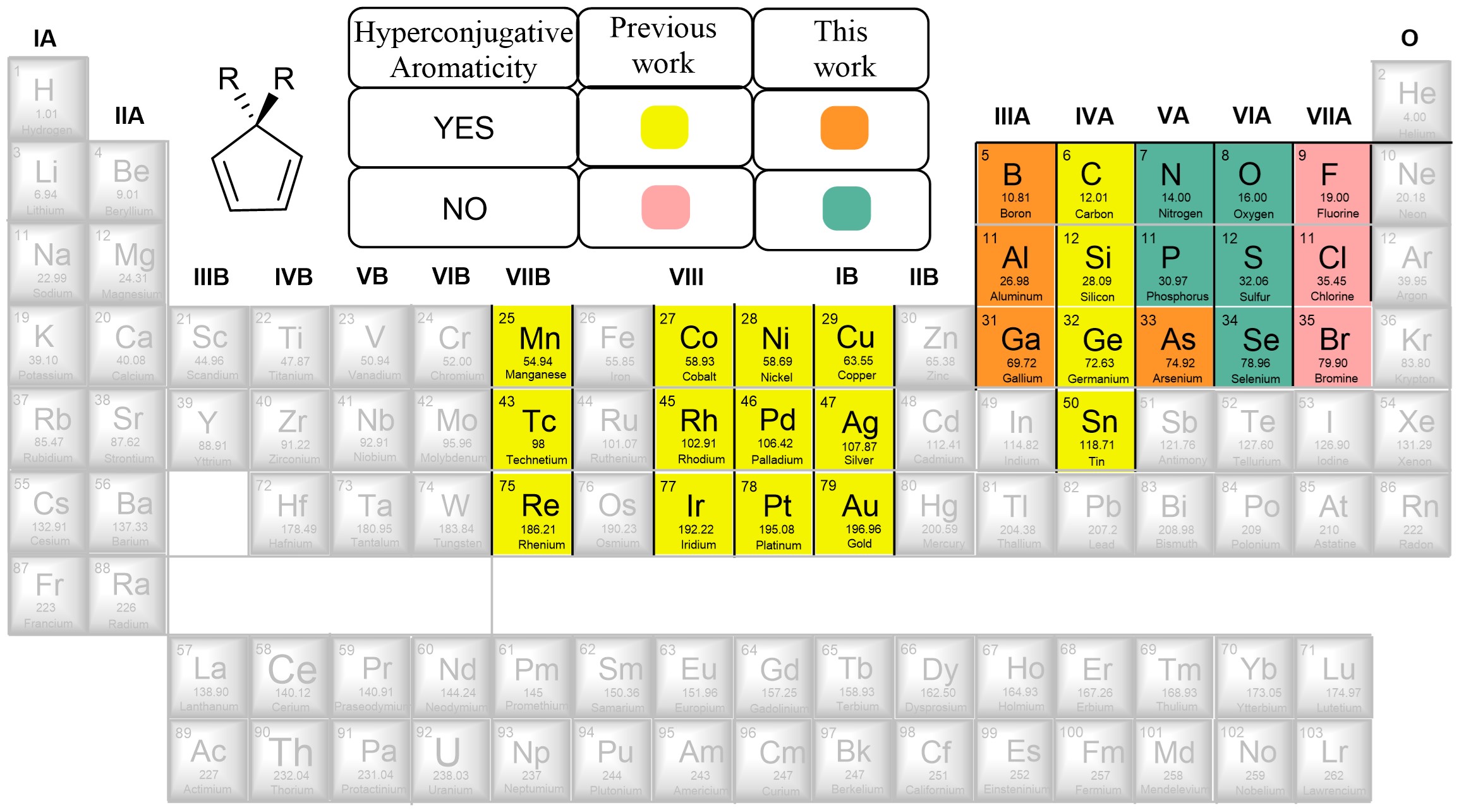Probing hyperconjugative aromaticity of cyclopentadiene and pyrroliums containing groups 13, 15, and 16 substituents

Combining aromaticity and hyperconjugation, two important concepts in organic chemistry, leads to hyperconjugative aromaticity, which was first proposed by Mulliken in 1939. However, previous studies on hyperconjugative aromaticity have mainly focused on substituents containing either main-group elements (group 14) or transition metals in groups 7, 9, 10, and 11. In this study, we perform density functional theory (DFT) calculations on cyclopentadiene and pyrrolium derivatives containing groups 13, 15 and 16 substituents to examine the possibility of achieving hyperconjugative aromaticity. Our results demonstrate that group 13 substituents can induce hyperconjugative aromaticity due to their low electronegativity. Groups 15 and 16 substituents result in nonaromaticity in most cases due to their high electronegativity. Our findings extend the scope of hyperconjugative aromaticity to group 13 substituents.
https://pubs.rsc.org/en/Content/ArticleLanding/2025/NJ/D4NJ04234D
